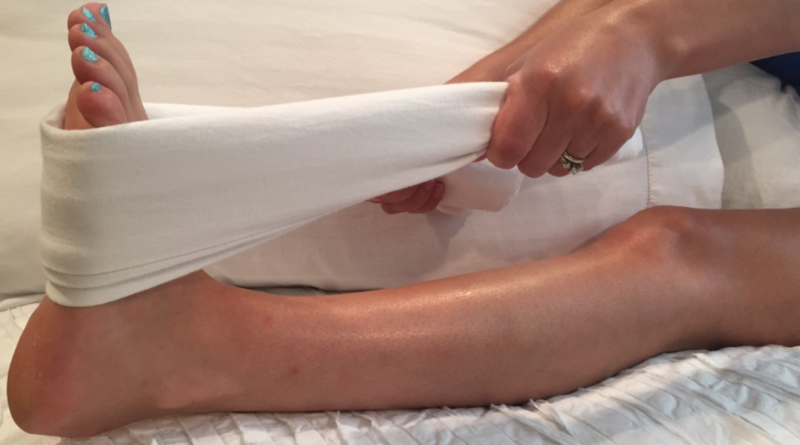How To Cure Plantar Fasciitis In One Week?
Plantar fasciitis can be a debilitating condition that affects your ability to enjoy daily activities and even simple pleasures like taking a stroll. The good news is that with the right approach, you can significantly alleviate the pain and discomfort associated with plantar fasciitis in just one week. In this comprehensive guide, we’ll explore the causes of plantar fasciitis, a step-by-step treatment plan, and additional tips to help you find relief and regain mobility.
Understanding the Root Causes
Before we delve into the remedies, it’s crucial to understand the factors that contribute to plantar fasciitis. This knowledge will empower you to address the underlying issues effectively.
Causes of Plantar Fasciitis
- Overuse: Excessive physical activity, especially on hard surfaces, can lead to the overuse and strain of the plantar fascia.
- Improper Footwear: Wearing shoes with inadequate arch support and cushioning can exacerbate the condition.
- Obesity: Carrying excess body weight places additional stress on your feet, making you more susceptible to plantar fasciitis.
- Foot Structure: People with high arches, flat feet, or abnormal gait patterns are at a higher risk of developing plantar fasciitis.
- Age: The condition is more prevalent in middle-aged individuals, though it can affect people of all ages.
Step-by-Step Treatment Plan
1. Rest and Ice
- Rest: Begin your journey to recovery by giving your feet the rest they deserve. Avoid activities that worsen the pain, such as prolonged standing or high-impact exercises.
- Ice: Applying an ice pack to the affected area for 15-20 minutes several times daily can help reduce inflammation and provide relief. Always wrap the ice pack in a cloth to prevent direct skin contact.
2. Stretching Exercises
Regular stretching is a cornerstone of plantar fasciitis treatment. These exercises can help improve flexibility and alleviate pain.
Plantar Fascia Stretch
- Sit down and extend one leg.
- Gently pull your toes toward your shin using your hand until you feel a stretch in your arch.
- Hold for 30 seconds and repeat this stretch three times for each foot.
Achilles Tendon Stretch
- Stand facing a wall with one foot forward and one foot back.
- Lean forward, keeping your back leg straight and your heel on the ground.
- Hold for 30 seconds and repeat this stretch three times for each foot.
3. Supportive Footwear
Investing in the proper footwear is crucial for managing plantar fasciitis. Look for shoes with excellent arch support and cushioning. Alternatively, custom orthotic inserts can provide tailored support and comfort.
4. Night Splints
Wearing night splints can be highly effective in relieving morning pain. These devices stretch your plantar fascia while you sleep, preventing it from tightening overnight.
5. Anti-Inflammatory Medications
Over-the-counter nonsteroidal anti-inflammatory drugs (NSAIDs) like ibuprofen can help reduce pain and inflammation. However, it’s essential to consult with a healthcare professional before using any medication, especially if you have underlying health conditions.
6. Physical Therapy
Consider seeking the expertise of a physical therapist. They can provide personalized exercises and techniques to address your needs, improve your condition, and prevent future flare-ups.
7. Self-Massage
Gently massaging the arch of your foot with a tennis ball or a frozen water bottle can provide relief by loosening tight fascia. This can be particularly effective after stretching exercises.
8. Maintain a Healthy Weight
If you’re overweight, losing excess pounds can significantly reduce the strain on your feet, facilitating faster healing.
9. Night Braces
Night braces gently stretch your foot while you sleep, reducing morning stiffness and pain.
10. Consider Orthotics
Custom orthotic inserts, prescribed by a podiatrist, can provide precise arch support tailored to your unique foot structure.
Frequently Asked Questions
1. Can plantar fasciitis go away on its own?
In some cases, plantar fasciitis may resolve spontaneously with rest and self-care. However, seeking treatment to expedite the healing process and prevent chronic issues is advisable.
2. Can I continue exercising with plantar fasciitis?
High-impact exercises should be avoided until the pain subsides. Instead, opt for low-impact activities like swimming or cycling to maintain your fitness.
3. How long does it take to recover from plantar fasciitis?
Diligently adhering to the treatment plan outlined here, many people experience significant relief within a week. However, severe cases may require several months for full recovery.
4. Are there any surgical options for plantar fasciitis?
Surgery is typically considered a last resort when conservative treatments fail. Procedures like plantar fascia release may be recommended for severe cases.
5. Can plantar fasciitis come back after treatment?
Yes, it can recur if you don’t address the underlying causes or continue engaging in activities that strain the plantar fascia. Proper footwear and ongoing self-care are essential for prevention.
6. Are there any home remedies for plantar fasciitis?
In addition to the steps mentioned earlier, consider applying a warm compress to alleviate morning stiffness and pain.
7. What’s the difference between plantar fasciitis and heel spurs?
Plantar fasciitis refers to the inflammation of the plantar fascia, whereas heel spurs are bony growths that can develop due to prolonged inflammation. Not everyone with plantar fasciitis will have heel spurs.
8. Can I continue working with plantar fasciitis?
If your job requires prolonged periods of standing or walking, it’s crucial to discuss accommodations with your employer. This may include sitting breaks and the use of supportive footwear.
Conclusion
In conclusion, plantar fasciitis is a condition that can significantly impact your quality of life, but it’s treatable and manageable. By following the comprehensive treatment plan outlined in this guide and consulting with a healthcare professional, you can take significant steps toward a pain-free and active future. Remember that consistency and patience are essential on your path to recovery.




